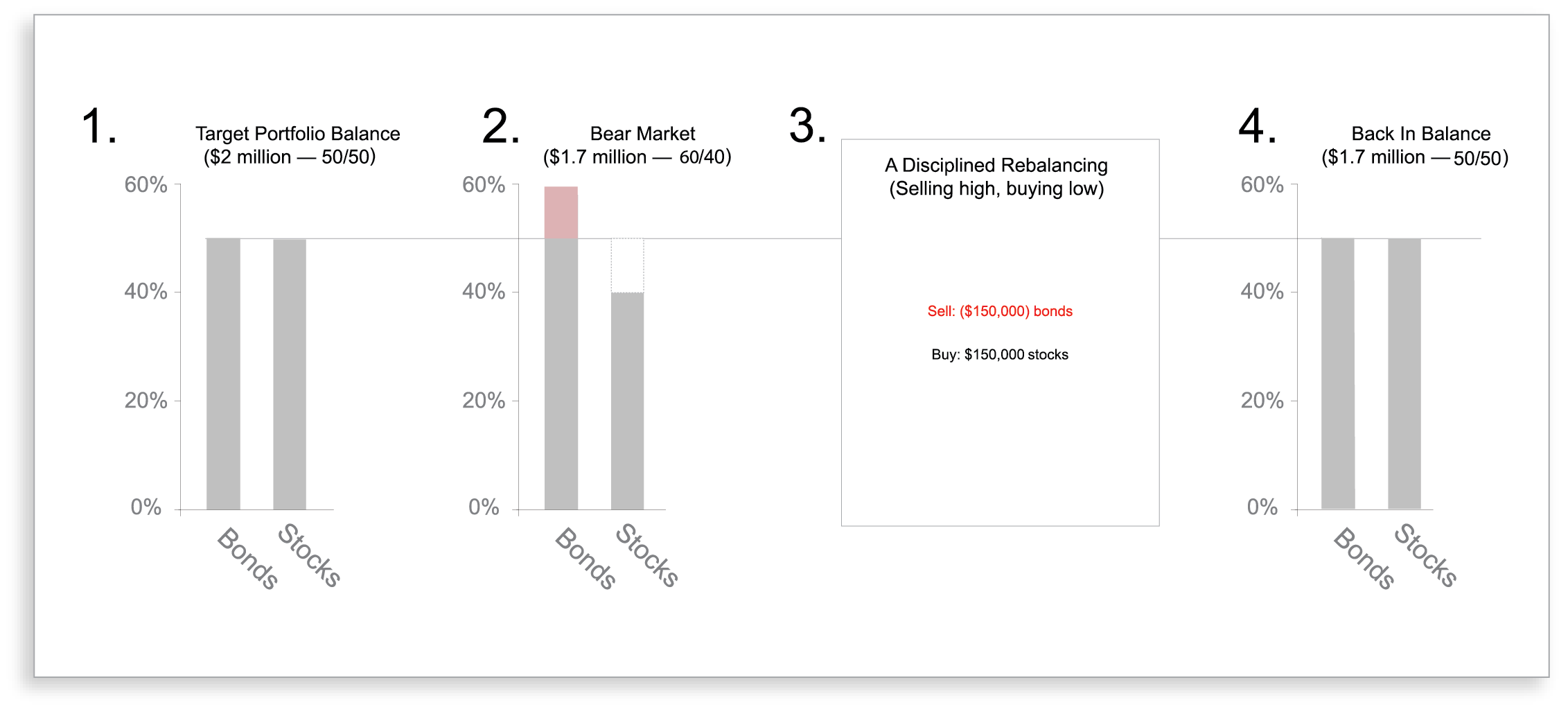The Art of Asset Location
When it comes to buying or selling your home, most of us already know that the price depends on three things: location, location, location. Asset location is a similar, if less familiar rule that applies to your investments. By managing asset location within your portfolio, we help you keep as much of your wealth as possible – even after the tax man takes his cut. Given how deep that cut can be, it’s another way we add value to your total experience as an investor.
Asset Location: A Working Definition
Let’s begin by noting that asset location should not be confused with asset allocation. The two are related, but separate beings, like cousins or siblings.
- Asset allocation is dividing your money among different asset classes, based on the amount of market risk and expected reward inherent to each. For example, a simple asset allocation is equally dividing your holdings 50/50 into stocks and bonds. You may then subdivide your stocks among international versus U.S., small-companies versus large, and so on.
- Asset location is deciding where to locate your stocks, bonds and other holdings within your taxable and tax-sheltered accounts, to maximize overall tax efficiency.
Why Do It?
There’s empirical evidence that asset location is worth the extra effort it takes. Financial commentator Michael Kitces points to a Morningstar analysis indicating that a well-executed asset location strategy can add as much as a half-percent to your bottom line each year [1]. That’s $500/year for every $100,000 invested (which, we might add, can represent a good chunk of your advisor’s fee returned to you). Why leave that money sitting on the table?
Why You (Probably) Need an Advisor to Assist
It makes intuitive sense that, by locating your most heavily taxed investments within your tax-sheltered accounts, you can minimize or even eliminate their tax inefficiencies. But it’s not as easily implemented as you might think.
First, there is only so much room within your tax-sheltered accounts. After all, if there were unlimited opportunity to tax-shelter your money, we’d simply move everything there and be done with it. In reality, challenging trade-offs must be made to ensure you’re making best use of your tax-sheltered “space.”
Second, it’s not just about tax-sheltering your assets; it’s about doing so within the larger context of how and when you need those assets available for achieving your personal goals. Arriving at – and maintaining – the best formula for you and your unique circumstances involves many moving parts.
- Managing within the context of your bigger picture – Before we locate your assets, we determine your proper asset allocation based on your unique goals and risk tolerances. Only then is it appropriate to determine where those holdings should reside for tax efficiency.
- Planning for your goals and timeframe – Is retirement near or far? Do you want to leave a legacy? Are your circumstances likely to change in the next few years? There may be withdrawal, estate planning or other needs that override optimal asset location.
- Managing tax-sheltered accounts – What are your various tax-sheltered account opportunities: Roth versus traditional IRAs versus company retirement plans? How much room do you have in each for holding assets, and which types of holdings in which kinds of accounts are going to give you the most tax-efficient bang for your buck? How does evolving tax code impact your plans?
- Considering other tax-planning needs – We also consider the benefits of holding stocks within taxable accounts, such as the ability to harvest capital losses against capital gains, donate appreciated shares to charity, implement a step-up in basis, and take foreign tax credits. While these opportunities have more or less importance depending on your goals and circumstances, they become unavailable for stocks held in tax-sheltered accounts.
Never Heard of Asset Location? Here’s Why
We don’t see asset location frequently covered in the popular financial press. Why is that? We believe it’s in part because a large swath of the financial industry ignores the need. You’ll typically only see asset location planning offered by an advisor (like Hiley Hunt Wealth Management), who is well-positioned to provide objective counsel and oversight for your larger holdings. In the absence of this oversight, you’ll find:
- Missing Pieces – Asset location is best implemented when you and your advisor consider your total wealth and its multiple, often competing components. As you accumulate regular accounts, retirement plan accounts and financial service providers, your assets can wander far and wide over the years. It’s a challenge to organize them into a cohesive whole, especially when there is no “quarter back” advisor in place to oversee the results.
- Missing Expertise – Even if you have a handle on your varied accounts and holdings, asset location does not lend itself to a turnkey formula. There are essential guidelines, as touched on above, but it’s both an art and a science to best apply asset location within your unique, often complex wealth management needs.
- Missing Oversight – Asset location is not a set-and-forget activity. As your own goals, the market and government regulations evolve, your portfolio requires ongoing coordination to retain the desired efficiencies.
While most investors may not be aware when they are missing out on effective asset location, the resulting money they may unnecessarily lose to taxes can be very real. We look forward to continuing to incorporate asset location in its proper place within your overall wealth management. Can we answer additional questions? Let us know!
Learn more about Hiley Hunt Wealth Management and who we serve in Omaha, NE –Financial Planning and Investment Management
[1] Michael Kitces, “Asset Location: The New Wealth Management Value-Add For Optimal Portfolio Design,” March 6, 2013; and Morningstar Tries to Quantify The Value of Financial Planning,” November 12, 2012.

